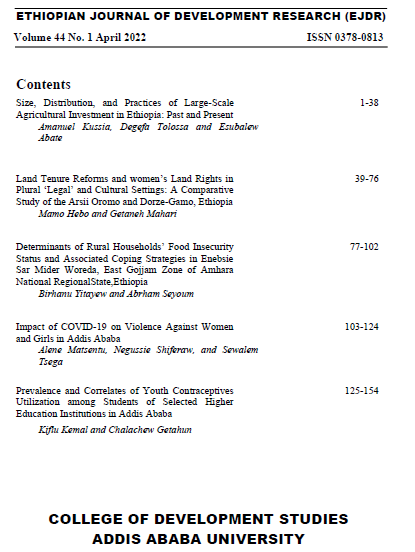Size, Distribution, and Practices of Large-Scale Agricultural Investment in Ethiopia: Past and Present
DOI:
https://doi.org/10.20372/ejdr.v44i1.4395Abstract
The main aim of this study is to systematically analyze the size, distribution,
and practices of large-scale agricultural investment (LSAI) in Ethiopia between
the 1950s and 2000s. This period coincides with the Ethiopian modern regimes
of Emperor Haile Selassie I, Derg, and the Ethiopian People’s Revolutionary
Democratic Front (EPRDF). This article is based on both primary and
secondary data obtained from various sources and complemented by data
collected through interviews. Particularly, a systematic review of the pertinent
literature was carried out to understand the issue at hand. LSAI was founded
and grew in size and number during the Imperial regime, but they were crushed
by the successor government, which followed a socialist development model.
However, such investment was invigorated by the EPRDF regime, got a new
identity, and became an integral component of its economic development
policies and strategies. Lowland areas occupied by pastoralists and agropastoralists
have been the focus of the three regimes. Even if LSAI is
significantly increased in terms of number, size, type, and distribution,
especially during the EPRDF era, its benefit to the country and local people has
been an area of debate and empirical investigation. Provided that there is a
growing pressure on the land and livelihood systems of the local people, serious
attention should be given by all development actors to the issue of LSAI.

